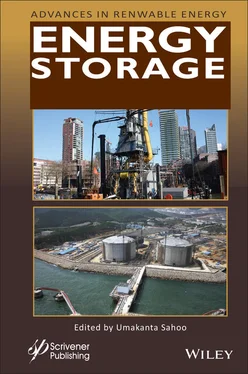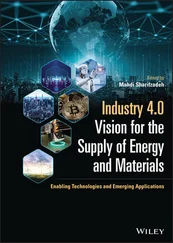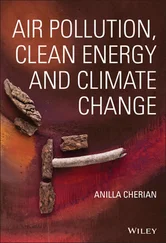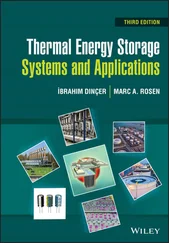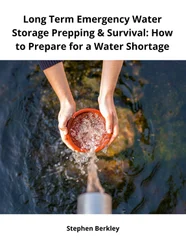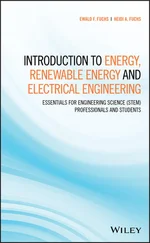7 Chapter 7Figure 7.1 Design basis for energy storage evaluation using time dependent simul...Figure 7.2 Sequence of steps in recycling of lead acid battery.
8 Chapter 8Figure 8.1 Experimental set-up: opaque view (left), transparent view (right).Figure 8.2 Simplified simulation model: without fins (left), with fins (right).Figure 8.3 Mesh of full body – (a) Main component (PCM), (b) pipe, (c) pipe-fins...Figure 8.4 Mesh of the one-fourth symmetry sector – (a) Main component (PCM), (b...Figure 8.5 Graphs showing variation of temperature and liquid fraction during me...Figure 8.6 Contours of static temperature showing melting of PCM (in case of fin...Figure 8.7 Contours of liquid fraction showing melting of PCM (in case of fins i...Figure 8.8 Graphs showing variation of temperature and liquid fraction during so...
1 Chapter 1 Table 1.1 CSP projects with parabolic trough receiver concepts integrated with t... Table 1.2 CSP projects with linear Fresnel receiver concepts integrated with the... Table 1.3 CSP projects with central receiver (power tower) concepts integrated w... Table 1.4 Typical materials used in sensible heat TES storage (Mehling and Cabez... Table 1.5 Typical materials used in latent heat TES systems (Mehling and Cabeza,...
2 Chapter 2 Table 2.1 Total power installed capacity of India (As on 30.09.2019)... Table 2.2 Costing of 1 MW Solar PV (24x7). Table 2.3 Cost analysis of 1 MWth solar power 24x7 energy storage. Table 2.4 Different climate zone of various part of India, suitable technologies...Table 2.5 Equipment list used in the experimental set up.Table 2.6 Operating data and limit value (Turbine 1).
3 Chapter 3Table 3.1 Battery energy storage system...
4 Chapter 4Table 4.1 Types of double-layer capacitors...
5 Chapter 5Table 5.1 Properties of SHS materials.Table 5.2 Comparison of different Sensible Thermal Energy storage systems.Table 5.3 Method available for producing MEPCM.Table 5.4 Composite PCM formation and properties.Table 5.5 Comparison of three TES systems.Table 5.6 TES based PV/T in building applications.Table 5.7 Mixture values at different state points.Table 5.8 Some applications of TES system by different researchers.
6 Chapter 6Table 6.1 Different major manufacturers and commercial capacitors available in t...
7 Chapter 7Table 7.1 Benefits and barriers of lead acid batteries.Table 7.2 Benefits and barriers of nickel based batteries.Table 7.3 Benefits and barriers of Lithium-ion batteries.Table 7.4 Benefits and barriers of sodium-based batteries.Table 7.5 Performance indicators of various battery chemistries.Table 7.6 Overview of applications of battery storage in utility applications.Table 7.7 Direct and indirect benefits of battery energy storage systems.Table 7.8 Definitions of key battery technical characteristics.Table 7.9a Energy requirements of load.Table 7.9b Battery system.Table 7.9c Solar power generation system.Table 7.9d Expenditure and savings.Table 7.10 Test instruments used in battery maintenance.Table 7.11 Three-stage development for battery manufacturing in India.Table 7.12 Expected economic opportunity from battery manufacturing.
8 Chapter 8Table 8.1 Various types of energy storage technologies...Table 8.2 Applications of PCMs...Table 8.3 Suitable PCMs for storage of latent heat...Table 8.4 Various methods and instruments used for measurement of thermophysical...Table 8.5 Dimensions and constituent material of components.Table 8.6 Properties of PCM.
1 Cover
2 Table of Contents
3 Title Page
4 Copyright
5 List of Contributors
6 Preface
7 Begin Reading
8 Index
9 End User License Agreement
1 v
2 ii
3 iii
4 iv
5 xi
6 xii
7 xiii
8 1
9 2
10 3
11 4
12 5
13 6
14 7
15 8
16 9
17 10
18 11
19 12
20 13
21 14
22 15
23 16
24 17
25 18
26 19
27 20
28 21
29 22
30 23
31 24
32 25
33 26
34 27
35 28
36 29
37 30
38 31
39 32
40 33
41 34
42 35
43 36
44 37
45 38
46 39
47 40
48 41
49 42
50 43
51 44
52 45
53 46
54 47
55 48
56 49
57 50
58 51
59 52
60 53
61 54
62 55
63 56
64 57
65 58
66 59
67 60
68 61
69 62
70 63
71 64
72 65
73 66
74 67
75 68
76 69
77 70
78 71
79 72
80 73
81 74
82 75
83 76
84 77
85 78
86 79
87 80
88 81
89 82
90 83
91 84
92 85
93 86
94 87
95 88
96 89
97 90
98 91
99 92
100 93
101 94
102 95
103 96
104 97
105 98
106 99
107 100
108 101
109 102
110 103
111 104
112 105
113 106
114 107
115 108
116 109
117 110
118 111
119 112
120 113
121 114
122 115
123 116
124 117
125 118
126 119
127 120
128 121
129 122
130 123
131 124
132 125
133 126
134 127
135 128
136 129
137 130
138 131
139 132
140 133
141 134
142 135
143 136
144 137
145 138
146 139
147 140
148 141
149 142
150 143
151 144
152 145
153 146
154 147
155 149
156 150
157 151
158 152
159 153
160 154
161 155
162 156
163 157
164 158
165 159
166 160
167 161
168 162
169 163
170 164
171 165
172 166
173 167
174 168
175 169
176 170
177 171
178 172
179 173
180 174
181 175
182 176
183 177
184 178
185 179
186 180
187 181
188 182
189 183
190 184
191 185
192 186
193 187
194 188
195 189
196 190
197 191
198 192
199 193
200 194
201 195
202 196
203 197
204 198
205 199
206 201
207 202
208 203
209 204
210 205
211 206
212 207
213 208
214 209
215 210
216 211
217 212
218 213
219 214
220 215
221 216
222 217
223 218
224 219
225 220
226 221
227 222
228 223
229 224
230 225
231 226
232 227
233 228
234 229
235 230
236 231
237 232
238 233
239 234
240 235
241 236
242 237
243 238
244 239
245 240
246 241
247 242
248 243
249 244
250 245
251 246
252 247
253 248
254 249
255 250
256 251
257 252
258 253
259 254
260 255
261 256
262 257
263 258
264 259
265 260
266 261
267 262
268 263
269 264
270 265
271 266
272 267
273 268
274 269
275 270
276 271
277 272
278 273
279 274
280 275
281 276
282 277
283 278
284 279
285 280
286 281
287 282
Scrivener Publishing
100 Cummings Center, Suite 541J
Beverly, MA 01915-6106
Publishers at Scrivener
Martin Scrivener ( martin@scrivenerpublishing.com)
Phillip Carmical ( pcarmical@scrivenerpublishing.com)
Edited by
Umakanta Sahoo
Читать дальше
